Functional Traits and Water Transport Strategies in Lowland Tropical Rainforest Trees
- PMID: 26087009
- PMCID: PMC4472991
- DOI: 10.1371/journal.pone.0130799
Functional Traits and Water Transport Strategies in Lowland Tropical Rainforest Trees
Abstract
Understanding how tropical rainforest trees may respond to the precipitation extremes predicted in future climate change scenarios is paramount for their conservation and management. Tree species clearly differ in drought susceptibility, suggesting that variable water transport strategies exist. Using a multi-disciplinary approach, we examined the hydraulic variability in trees in a lowland tropical rainforest in north-eastern Australia. We studied eight tree species representing broad plant functional groups (one palm and seven eudicot mature-phase, and early-successional trees). We characterised the species' hydraulic system through maximum rates of volumetric sap flow and velocities using the heat ratio method, and measured rates of tree growth and several stem, vessel, and leaf traits. Sap flow measures exhibited limited variability across species, although early-successional species and palms had high mean sap velocities relative to most mature-phase species. Stem, vessel, and leaf traits were poor predictors of sap flow measures. However, these traits exhibited different associations in multivariate analysis, revealing gradients in some traits across species and alternative hydraulic strategies in others. Trait differences across and within tree functional groups reflect variation in water transport and drought resistance strategies. These varying strategies will help in our understanding of changing species distributions under predicted drought scenarios.
Conflict of interest statement
Figures
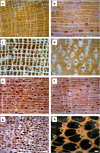
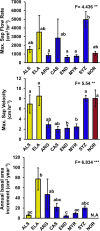
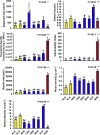
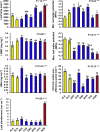
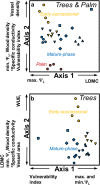
References
-
- Kharin VV, Zwiers FW, Zhang X, Hegerl GC. Changes in temperature and precipitation extremes in the IPCC ensemble of global coupled model simulations. J Climate. 2007;20: 1419–1444. 10.1175/JCLI4066.1 - DOI
-
- Giorgi F, Coppola E, Raffaele F. A consistent picture of the hydroclimatic response to global warming from multiple indices: models and observations, J Geophys Res-Oc Atm. 2014;119: 11,695–11,708.
Publication types
MeSH terms
Substances
LinkOut - more resources
Full Text Sources
Other Literature Sources
Medical
Miscellaneous

